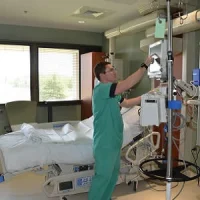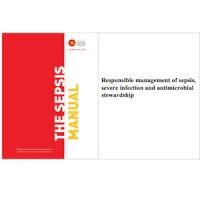Sepsis is a critical issue in old age and is among the top causes for intensive care unit (ICU) admission in the elderly. Although there are important benefits supposed to be derived from moderate exercise in the elderly population (better cardiovascular fitness, improved microcirculation, less obesity, etc.), improved outcome from sepsis has not been listed among them until now, says an Editorial in the journal Critical Care.
"At least in inbred, old mice, voluntary exercise appears to provide a survival benefit from experimentally induced intra-abdominal sepsis. If these results could be translated into ageing human populations, the ramifications would be substantial indeed," says the Editorial.
The findings cited above are from a recent study by Tyml and colleagues, who induced sepsis by an intraperitoneal injection of a faecal slurry in male, nonobese C57BL/6 mice. Based on the findings, exercised older mice (22 months old) had a better outcome with significantly lower systemic cytokine and chemokine response and had a less pronounced procoagulant response than nonexercised, aged mice subjected to the same infectious challenge.
In the Editorial, authors Debasree Banerjee, MD, and Steven M. Opal, MD, both with the Department of Medicine, Warren Alpert Medical School of Brown University, Providence, RI, USA, highlight the increasingly important need to diagnose and care for the elderly with sepsis as a distinct patient population.
As Drs. Banerjee and Opal point out, the mechanism(s) underpinning the disproportionate susceptibility to sepsis in the elderly is not yet fully understood. Elderly patients are at higher risk for sepsis likely related to the higher rates of comorbidities, including dementia, poor dentition, and diabetes. Additionally, institutionalisation, implanted devices, and surgical procedures can predispose patients to infection.
The authors also say that elderly septic patients often do not have typical clinical responses to sepsis, making diagnosis by the Sepsis-3 quick Sepsis-Related Organ Failure Assessment (qSOFA) criteria difficult. Accepted thresholds for biomarker levels for diagnosis may not be appropriate in the older population, particularly among patients with pre-existing organ dysfunction. Thus, given the protean manifestations of infection in the elderly, diagnosis of sepsis is often delayed.
They explain: "Once infected, older patients experience a disadvantaged host immune response with defects in humoral and cellular immune function. The pattern of cytokine release during sepsis in the elderly demonstrates higher levels of tumour necrosis factor (TNF)-α, interleukin (IL)-1β, and IL-6. A smouldering inflammatory state during ageing termed 'inflammageing' can affect sepsis physiology."
Elderly mice experience many of the same age-related defects in immune function and increased risk of infection as observed in the older adult human patients. For instance, aged mice are more susceptible than young mice to endotoxininduced systemic inflammation. While it might be speculated that exercised old mice in good cardiovascular fitness might fare better in sepsis than nonexercised, aged mice, limited experimental data exist to answer this question, according to Drs. Banerjee and Opal.
Notably, in Tyml et. al's study, consistent upregulation of endogenous endothelial nitric oxide synthase (eNOS) was observed in exercised mice compared to nonexercised mice. Nitric oxide is a potent vasodilator and has the capacity to limit neutrophil and platelet adherence to endothelial surfaces. Exercise in older human subjects is known to improve endothelial function, increase eNOS expression, and promote microcirculatory responsiveness.
"Like many innovative investigations, the results of this study pose more questions than they answer," write Drs. Banerjee and Opal. "The most critical question is, of course, how well do these study findings in mice translate to improved outcomes in human sepsis? The data collected thus far in older humans indicate that while the effect of exercise on inflammatory biomarkers is measurable, the effect size is rather small and often confounded by obesity indices."
Based on this study, one of the purported benefits might be a more constrained and appropriate host response to systemic infection, the two doctors note.
Source: Critical Care
Image Credit: Pixabay
References:
Banerjee, Debasree. Opal, Steven M. (2017) Age, exercise, and the outcome of sepsis. Critical Care. doi.org/10.1186/s13054-017-1840-9
Latest Articles
Sepsis, ICU, Critical Care, elderly
Sepsis is a critical issue in old age and is among the top causes for intensive care unit (ICU) admission in the elderly. Although there are important benefits supposed to be derived from moderate exercise in the elderly population (better cardiovascular










